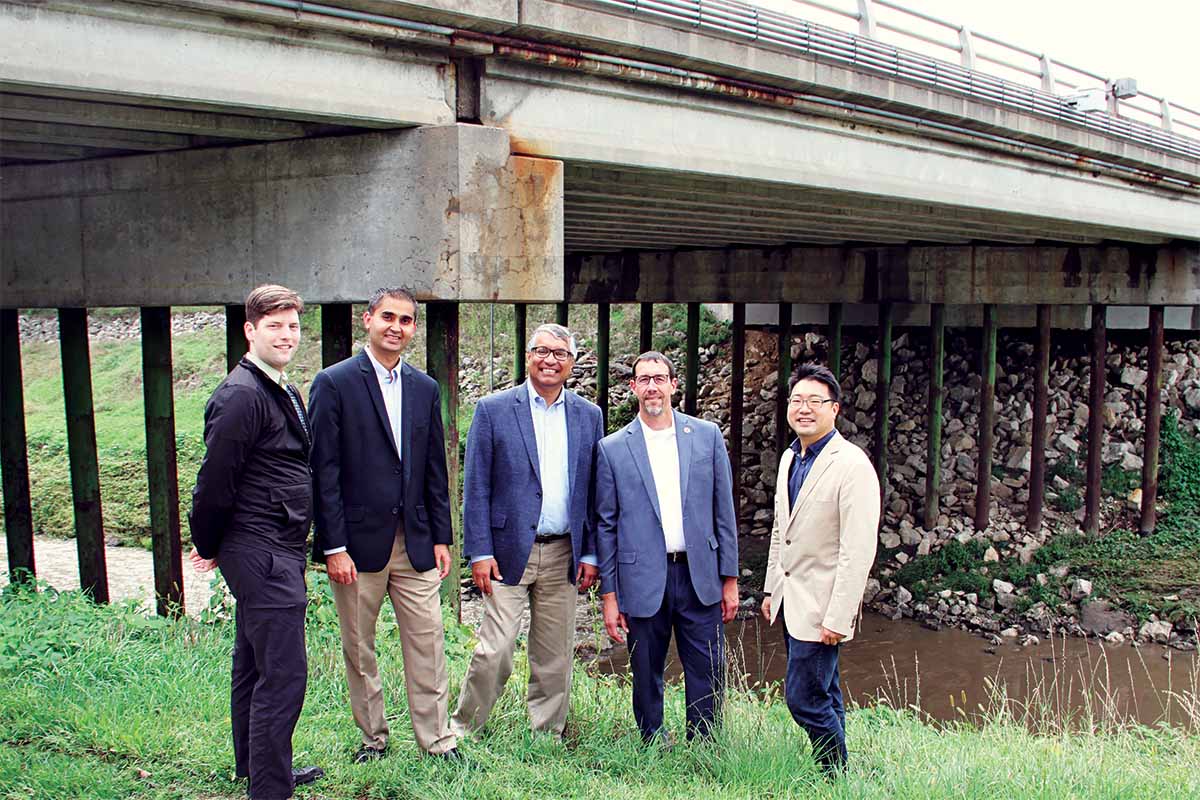UNO Magazine: Take Me Home, Country Roads
The refrain from the classic John Denver song is more than just an ode to nostalgia. In recent years, it has echoed the importance rural communities are placing on infrastructure.
- published: 2022/07/16
- contact: Eva Burklund - Office of Strategic Marketing and Communications
- search keywords:
- uno magazine
- research
- IS&T
- CPACS

The refrain from the classic John Denver song is more than just an ode to nostalgia. in recent years, it has echoed the importance rural communities are placing on infrastructure.
Impacting everything from grocery runs to doctor appointments to soccer games, consistent transportation is incredibly important to everyone, especially when you don’t have daily necessities within walking or biking distance.
Since 2017, the Nebraska Department of Transportation has worked with the University of Nebraska System on many projects to improve mobility in rural areas. This includes efforts led by a partnership between UNO Center for Public Affairs Research (CPAR) and the University of Nebraska at Kearney to grow and sustain transportation options in rural Nebraska communities so that informed discussions about improving transit systems can occur. Funding for the project was recently renewed in 2022 for another two-and-a-half years.
“We’re providing research, data and efficient systems to build the capacities of rural transit agencies to continue their work of community development. We are also getting people together and having a conversation about how to expand mobility options throughout the state,” Josie Gatti Schafer, Ph. D., director of CPAR said. “It’s really about digging into what challenges in those communities are and working with the people there to respond effectively and efficiently.”
With a need for public transit services across the state, the NU System is also assisting these rural agencies through an online tracking system to assist providers with access to federal funding, as well as maintaining and promoting a website, nebraskatransit.com, so more people in these communities know about the services available.
“You don’t know what challenges and hurdles they would have to overcome to do basic things that a lot of people with a car would take for granted,” Schafer said. As the demand for transportation to access basic needs increases, the research and resources of the NU System will continue to help serve communities.
“Knowledge is power and the data and data systems we provide can help rural communities sustain and transform,” Schafer said. “There’s this want to be responsive and accountable, and they need these research services to do so.”
However, UNO’s role in transportation improvements across Nebraska isn’t just tied to public transit. Researchers are also improving the roads themselves.
Allowing for effective transportation over everything from small overpasses to large rivers, bridges are vital to transportation across the state, as is their maintenance
“When we construct bridges, bridges are inspected every two years,” Robin Gandhi, Ph. D., professor in the school of interdisciplinary informatics, said. “You get a snapshot of how the bridge is behaving and make sure that any problems are noted. As the bridge ages, it’s important to keep track of how quickly the bridge is deteriorating.”
Gandhi and a team of experts from UNO and the University of Nebraska-Lincoln have paid special attention to bridges in rural communities and were recently awarded a $5 million grant from the Department of Defense Army Corps of Engineers to conduct research that will extend the lifespan of bridges through new monitoring technology.
On top of being used to make comparisons, patterns found throughout decades of government data can also aid systems created to monitor the behavior and health of bridges, so that awareness of weakening or failing bridges can happen sooner.
“Having a real-time perspective and analysis of bridge health is important. But you know, just attaching sensors to a bridge and monitoring one bridge, yes that’s possible,” Gandhi said. “But do we have the data infrastructure or framework by which we can monitor and analyze the structural health of all rural bridges or bridges in an entire state, in an entire country? That certainly becomes a much larger scalability privacy, and security issue.”
One problem the team hopes to overcome in real-time monitoring of this information is finding ways to avoid gaps in data availability due to bad service or connectivity.
“We want to make sure that there’s a resilient data collection platform where the data collected from the bridges can be transferred to a variety of different devices, different networks, with different bandwidths so that if one of these nodes goes down, the data is still available in other nodes,” Gandhi said.
As the team continues to collaborate on different projects surrounding this vital infrastructure, Gandhi says he hopes that their work can be used to help local, state and federal agencies save time and money.
“We can prioritize bridges that are deteriorating faster and perhaps wait on other bridges that don’t need as much help.”
About the University of Nebraska at Omaha
Located in one of America’s best cities to live, work and learn, the University of Nebraska at Omaha (UNO) is Nebraska’s premier metropolitan university. With more than 15,000 students enrolled in 200-plus programs of study, UNO is recognized nationally for its online education, graduate education, military friendliness and community engagement efforts. Founded in 1908, UNO has served learners of all backgrounds for more than 100 years and is dedicated to another century of excellence both in the classroom and in the community.
Follow UNO on Facebook, Twitter (X), Instagram, LinkedIn, and YouTube.